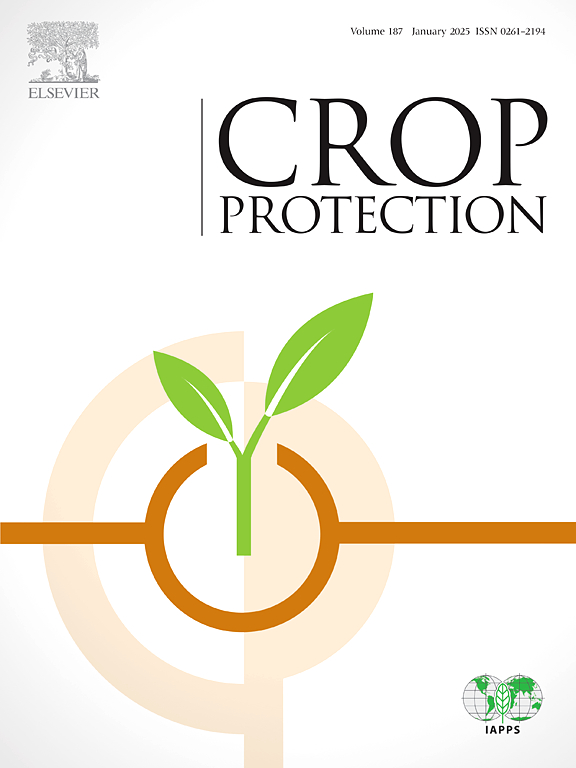A comparative analysis of efficacy of machine learning techniques for disease detection in some economically important crops
IF 2.5
2区 农林科学
Q1 AGRONOMY
引用次数: 0
Abstract
Early diagnosis of plant diseases is essential for reducing crop losses and improving agricultural production. Plant diseases markedly diminish output and food supply, highlighting the critical necessity for effective diagnostic instruments. Leaf analysis is an effective technique for evaluating plant health, providing information on diseases and deficiencies. This research underscores the significance of machine learning (ML) in predicting plant diseases, utilising its capacity to analyse characteristics from leaf photos and categorize plants as healthy or ill.
This study presents 35 prediction models that integrate seven leading machine learning techniques—Support Vector Machines (SVM), Random Forest (RF), Naïve Bayes (NB), Decision Tree (DT), k-Nearest Neighbor (KNN), Logistic Regression (LR) and Multilayer Perceptron (MLP)—with five crop varieties: maize, apple, grapes, tomato, and bell pepper. An equitable crop selection strategy guarantees the inclusion of grains, fruits, and vegetables. The PlantVillage dataset is employed for model training and testing, with performance assessed by measures such as Accuracy, Precision, Recall, F1-Measure, ROC, and AUC.
The Random Forest method demonstrated superior efficacy, with the greatest accuracy (91.8%), F1-Measure (91.4%), and AUC score (96.2%), surpassing SVM, KNN, and MLP. The Friedman test provided statistical support, affirming the trustworthiness of these findings. This study enhances the comprehension of machine learning applications in agriculture and establishes a comprehensive framework for the early diagnosis of plant diseases, therefore contributing to food security and sustainable agricultural practices.
机器学习技术在几种重要经济作物病害检测中的效果比较分析
植物病害的早期诊断对于减少作物损失和提高农业生产至关重要。植物病害显著减少产量和粮食供应,突出表明迫切需要有效的诊断工具。叶片分析是评价植物健康状况、提供病害和缺陷信息的有效技术。这项研究强调了机器学习(ML)在预测植物病害方面的重要性,利用其分析叶片照片特征的能力并将植物分类为健康或患病。
本文章由计算机程序翻译,如有差异,请以英文原文为准。
求助全文
约1分钟内获得全文
求助全文
来源期刊

Crop Protection
农林科学-农艺学
CiteScore
6.10
自引率
3.60%
发文量
200
审稿时长
29 days
期刊介绍:
The Editors of Crop Protection especially welcome papers describing an interdisciplinary approach showing how different control strategies can be integrated into practical pest management programs, covering high and low input agricultural systems worldwide. Crop Protection particularly emphasizes the practical aspects of control in the field and for protected crops, and includes work which may lead in the near future to more effective control. The journal does not duplicate the many existing excellent biological science journals, which deal mainly with the more fundamental aspects of plant pathology, applied zoology and weed science. Crop Protection covers all practical aspects of pest, disease and weed control, including the following topics:
-Abiotic damage-
Agronomic control methods-
Assessment of pest and disease damage-
Molecular methods for the detection and assessment of pests and diseases-
Biological control-
Biorational pesticides-
Control of animal pests of world crops-
Control of diseases of crop plants caused by microorganisms-
Control of weeds and integrated management-
Economic considerations-
Effects of plant growth regulators-
Environmental benefits of reduced pesticide use-
Environmental effects of pesticides-
Epidemiology of pests and diseases in relation to control-
GM Crops, and genetic engineering applications-
Importance and control of postharvest crop losses-
Integrated control-
Interrelationships and compatibility among different control strategies-
Invasive species as they relate to implications for crop protection-
Pesticide application methods-
Pest management-
Phytobiomes for pest and disease control-
Resistance management-
Sampling and monitoring schemes for diseases, nematodes, pests and weeds.
 求助内容:
求助内容: 应助结果提醒方式:
应助结果提醒方式:


